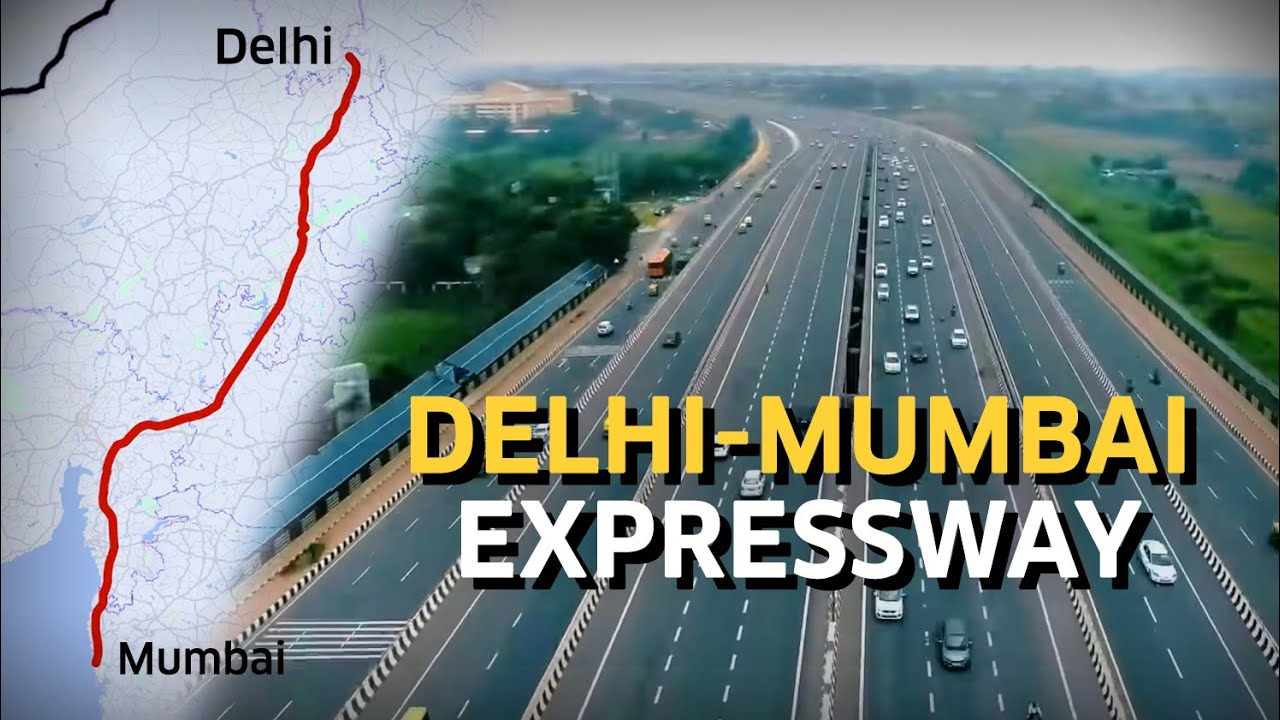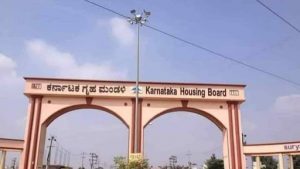The Delhi Mumbai Expressway is one of the most transformative infrastructure projects in India’s recent history. Stretching across multiple states and revolutionizing highway connectivity between the two economic powerhouses, Delhi and Mumbai, this expressway is not just a road, but a strategic lifeline. Designed with world-class features, sustainability components, and massive logistics potential, this eight-lane (expandable to twelve) expressway is set to become a cornerstone of India’s transportation revolution. If you’ve ever wondered about the Delhi-Mumbai Expressway route map, status updates, village coverage, or toll structure, this is your one-stop guide.
Also Read:- Delhi-Dehradun Expressway: Route | Construction | Map | Status 2025
What is the Delhi-Mumbai Expressway?
The Delhi Mumbai Expressway is a greenfield, access-controlled highway project connecting the national capital Delhi to the financial capital Mumbai. Envisioned to reduce travel time by over 12 hours, this 1,386 km long expressway is part of the Bharatmala Pariyojana and is touted as India’s longest expressway when complete.
The expressway is designed with high-speed lanes, service roads, and dedicated logistics hubs. From eco-friendly lighting systems to wildlife overpasses, it is being built to global standards with sustainability in mind.
How Long is the New Delhi-Mumbai Expressway Route?
The new Delhi-Mumbai Expressway route spans approximately 1,386 kilometers, cutting through six major states—Delhi, Haryana, Rajasthan, Madhya Pradesh, Gujarat, and Maharashtra. Once complete, it will significantly cut down the road travel time from over 24 hours to about 12 hours for private vehicles.
What is the Delhi-Mumbai Expressway Route Map?

The Delhi-Mumbai Expressway route map includes the following key segments:
- Starting Point: DND Flyway (Delhi)
- Through Haryana: Sohna, Nuh, Mewat
- Through Rajasthan: Alwar, Bharatpur, Dausa, Sawai Madhopur, Kota
- Through Madhya Pradesh: Mandsaur, Ratlam
- Through Gujarat: Dahod, Vadodara, Bharuch, Surat
- End Point: Jawaharlal Nehru Port (Mumbai Metropolitan Region)
The Delhi Mumbai Expressway route will have over 93 rest stops, 40 major interchanges, and 80+ flyovers, along with connectivity to major cities like Jaipur, Kota, and Vadodara.
Also Read:- Ganga Expressway: Route Map | Opening Date | Village List & More
Which Villages are Covered Under the Delhi-Mumbai Expressway?
The village list under Delhi-Mumbai Expressway spans hundreds of settlements across six states. Some of the notable ones include:
- Haryana: Mohammadpur, Sohna, Nuh, Tauru
- Rajasthan: Shahpura, Dausa, Tonk, Bundi
- Madhya Pradesh: Garoth, Jhabua, Bhanpura
- Gujarat: Songadh, Vyara, Bharuch, Ankleshwar
- Maharashtra: Shahpur, Bhiwandi, Palghar
These areas are witnessing a real estate and logistics boom thanks to the improved accessibility and connectivity.
What is the Current Status of Delhi-Mumbai Expressway?
If you’re wondering what is the current status of Delhi -Mumbai Expressway, then here’s a brief:
- As of mid-2025, more than 80% of the construction work has been completed.
- Sections like Delhi to Dausa and Vadodara to Surat are already operational.
- The entire expressway is expected to be fully operational by early 2026, with some stretches getting inaugurated earlier.
Also Read:- Samruddhi Mahamarg: Route Map | Distance | Opening Date | News
When Will Delhi Mumbai Expressway Open?
The expressway is being opened in phases, and certain sections like the Delhi-Dausa stretch are already functional. The complete opening is now targeted for the first half of 2026. This phased opening ensures minimal disruption while speeding up traffic relief in priority zones.
Who Made the Delhi-Mumbai Expressway?
The project is spearheaded by the National Highways Authority of India (NHAI), under the Ministry of Road Transport and Highways. Multiple private players and construction giants like L&T, Ashoka Buildcon, and IRB Infrastructure Developers Ltd. are involved in the execution.
How to Reach Delhi-Mumbai Expressway from Jaipur?
To reach the Delhi-Mumbai Expressway from Jaipur, take the Jaipur Ring Road towards Dausa and enter the expressway at the Dausa interchange, which directly connects to Delhi and Mumbai via the new route.
What is the Speed Limit on the Delhi to Mumbai Expressway?

The speed limit for passenger cars is expected to be set at 120 km/h, which is among the highest for Indian highways. For heavy vehicles, the limit is proposed to be around 80–100 km/h, depending on the section.
How Long is it from Delhi to Mumbai with a Car?
With this expressway, the travel time between Delhi to Mumbai with a car is expected to reduce from 24 hours to about 12 hours, depending on breaks and speed. This is a game-changer for personal travel and commercial logistics.
What is the Challan on the Delhi-Mumbai Expressway?
Overspeeding on this expressway could attract hefty challans ranging from ₹1,000 to ₹2,000, depending on the speed captured by AI-enabled speed cameras placed across the route. Additionally, lane indiscipline and overtaking violations are also penalized.
Also Read:- NH44 National Highway: Route | Map | Distance | News
Which 5 Toll Points Exist on the Mumbai Delhi Expressway?

The expressway is access-controlled and will have toll plazas equipped with FASTag. Five major toll points include:
- Dausa Toll Plaza
- Kota Toll Plaza
- Ratlam Toll Plaza
- Bharuch Toll Plaza
- Palghar Toll Plaza
How Much Toll is There From Mumbai to Delhi?
The toll from Mumbai to Delhi via the new expressway is expected to be around ₹1,200 to ₹1,500 for a one-way trip for a car. Toll rates will vary for different vehicle categories and are dynamically adjusted based on length travelled.
What is the Toll Tax on the Delhi-Mumbai Highway?
The Toll Tax on the Delhi-Mumbai Highway will be calculated based on per km usage. On average, the cost is expected to be ₹2.20 per km, amounting to about ₹1,500 for private cars for the full stretch.
When Will the Delhi Mumbai Expressway Start and Complete?
- Partial sections have already started operations.
- The full expressway is scheduled for completion by early 2026, although some stretches may open by the end of 2025.
Delhi Mumbai Expressway Map Snapshot

Here’s a breakdown of how the Delhi-Mumbai Expressway route map runs:
- Delhi to Jaipur (via Dausa)
- Jaipur to Kota
- Kota to Ratlam
- Ratlam to Vadodara
- Vadodara to Surat
- Surat to Vasai-Virar
- Vasai-Virar to Jawaharlal Nehru Port
This new route avoids congested cities and saves fuel, time, and cost.
What Are the Economic Benefits of the Mumbai-Delhi Expressway?
This project boosts real estate, tourism, logistics, and warehousing sectors in the six states it passes through. Industrial corridors, smart cities, and logistics parks are being planned along the route to support the Delhi-Mumbai Industrial Corridor (DMIC).
Are There Any Smart Features on the Delhi-Mumbai Expressway?
Yes, the expressway is integrated with intelligent traffic systems, solar-powered lighting, EV charging stations, and green bridges for wildlife crossings, making it one of the most advanced highways in the country.
Conclusion
The Delhi-Mumbai Expressway is more than just a road, it’s a futuristic leap in infrastructure, economic potential, and regional development. From farmers getting fair compensation to cities emerging as logistics hubs, the impact is multi-dimensional. For homebuyers, investors, or travel enthusiasts, this expressway redefines how India connects.
At Housiey Blogs, we strive to make your property journey as smooth as this expressway, transparent, fast, and without unnecessary detours.
We also urge you to check out our detailed guide on the Delhi-Mumbai Industrial Corridor (DMIC) to understand how this expressway fits into India’s mega growth plans.
FAQs
The Delhi Mumbai Expressway is one of the most transformative infrastructure projects in India’s recent history. Stretching across multiple states and revolutionizing highway connectivity between the two economic powerhouses, Delhi and Mumbai, this expressway is not just a road, but a strategic lifeline. Designed with world-class features, sustainability components, and massive logistics potential, this eight-lane (expandable to twelve) expressway is set to become a cornerstone of India’s transportation revolution. If you’ve ever wondered about the Delhi-Mumbai Expressway route map, status updates, village coverage, or toll structure, this is your one-stop guide.
Also Read:- Delhi-Dehradun Expressway: Route | Construction | Map | Status 2025
What is the Delhi-Mumbai Expressway?
The Delhi Mumbai Expressway is a greenfield, access-controlled highway project connecting the national capital Delhi to the financial capital Mumbai. Envisioned to reduce travel time by over 12 hours, this 1,386 km long expressway is part of the Bharatmala Pariyojana and is touted as India’s longest expressway when complete.
The expressway is designed with high-speed lanes, service roads, and dedicated logistics hubs. From eco-friendly lighting systems to wildlife overpasses, it is being built to global standards with sustainability in mind.
How Long is the New Delhi-Mumbai Expressway Route?
The new Delhi-Mumbai Expressway route spans approximately 1,386 kilometers, cutting through six major states—Delhi, Haryana, Rajasthan, Madhya Pradesh, Gujarat, and Maharashtra. Once complete, it will significantly cut down the road travel time from over 24 hours to about 12 hours for private vehicles.
What is the Delhi-Mumbai Expressway Route Map?

The Delhi-Mumbai Expressway route map includes the following key segments:
- Starting Point: DND Flyway (Delhi)
- Through Haryana: Sohna, Nuh, Mewat
- Through Rajasthan: Alwar, Bharatpur, Dausa, Sawai Madhopur, Kota
- Through Madhya Pradesh: Mandsaur, Ratlam
- Through Gujarat: Dahod, Vadodara, Bharuch, Surat
- End Point: Jawaharlal Nehru Port (Mumbai Metropolitan Region)
The Delhi Mumbai Expressway route will have over 93 rest stops, 40 major interchanges, and 80+ flyovers, along with connectivity to major cities like Jaipur, Kota, and Vadodara.
Also Read:- Ganga Expressway: Route Map | Opening Date | Village List & More
Which Villages are Covered Under the Delhi-Mumbai Expressway?
The village list under Delhi-Mumbai Expressway spans hundreds of settlements across six states. Some of the notable ones include:
- Haryana: Mohammadpur, Sohna, Nuh, Tauru
- Rajasthan: Shahpura, Dausa, Tonk, Bundi
- Madhya Pradesh: Garoth, Jhabua, Bhanpura
- Gujarat: Songadh, Vyara, Bharuch, Ankleshwar
- Maharashtra: Shahpur, Bhiwandi, Palghar
These areas are witnessing a real estate and logistics boom thanks to the improved accessibility and connectivity.
What is the Current Status of Delhi-Mumbai Expressway?
If you’re wondering what is the current status of Delhi -Mumbai Expressway, then here’s a brief:
- As of mid-2025, more than 80% of the construction work has been completed.
- Sections like Delhi to Dausa and Vadodara to Surat are already operational.
- The entire expressway is expected to be fully operational by early 2026, with some stretches getting inaugurated earlier.
Also Read:- Samruddhi Mahamarg: Route Map | Distance | Opening Date | News
When Will Delhi Mumbai Expressway Open?
The expressway is being opened in phases, and certain sections like the Delhi-Dausa stretch are already functional. The complete opening is now targeted for the first half of 2026. This phased opening ensures minimal disruption while speeding up traffic relief in priority zones.
Who Made the Delhi-Mumbai Expressway?
The project is spearheaded by the National Highways Authority of India (NHAI), under the Ministry of Road Transport and Highways. Multiple private players and construction giants like L&T, Ashoka Buildcon, and IRB Infrastructure Developers Ltd. are involved in the execution.
How to Reach Delhi-Mumbai Expressway from Jaipur?
To reach the Delhi-Mumbai Expressway from Jaipur, take the Jaipur Ring Road towards Dausa and enter the expressway at the Dausa interchange, which directly connects to Delhi and Mumbai via the new route.
What is the Speed Limit on the Delhi to Mumbai Expressway?

The speed limit for passenger cars is expected to be set at 120 km/h, which is among the highest for Indian highways. For heavy vehicles, the limit is proposed to be around 80–100 km/h, depending on the section.
How Long is it from Delhi to Mumbai with a Car?
With this expressway, the travel time between Delhi to Mumbai with a car is expected to reduce from 24 hours to about 12 hours, depending on breaks and speed. This is a game-changer for personal travel and commercial logistics.
What is the Challan on the Delhi-Mumbai Expressway?
Overspeeding on this expressway could attract hefty challans ranging from ₹1,000 to ₹2,000, depending on the speed captured by AI-enabled speed cameras placed across the route. Additionally, lane indiscipline and overtaking violations are also penalized.
Also Read:- NH44 National Highway: Route | Map | Distance | News
Which 5 Toll Points Exist on the Mumbai Delhi Expressway?

The expressway is access-controlled and will have toll plazas equipped with FASTag. Five major toll points include:
- Dausa Toll Plaza
- Kota Toll Plaza
- Ratlam Toll Plaza
- Bharuch Toll Plaza
- Palghar Toll Plaza
How Much Toll is There From Mumbai to Delhi?
The toll from Mumbai to Delhi via the new expressway is expected to be around ₹1,200 to ₹1,500 for a one-way trip for a car. Toll rates will vary for different vehicle categories and are dynamically adjusted based on length travelled.
What is the Toll Tax on the Delhi-Mumbai Highway?
The Toll Tax on the Delhi-Mumbai Highway will be calculated based on per km usage. On average, the cost is expected to be ₹2.20 per km, amounting to about ₹1,500 for private cars for the full stretch.
When Will the Delhi Mumbai Expressway Start and Complete?
- Partial sections have already started operations.
- The full expressway is scheduled for completion by early 2026, although some stretches may open by the end of 2025.
Delhi Mumbai Expressway Map Snapshot

Here’s a breakdown of how the Delhi-Mumbai Expressway route map runs:
- Delhi to Jaipur (via Dausa)
- Jaipur to Kota
- Kota to Ratlam
- Ratlam to Vadodara
- Vadodara to Surat
- Surat to Vasai-Virar
- Vasai-Virar to Jawaharlal Nehru Port
This new route avoids congested cities and saves fuel, time, and cost.
What Are the Economic Benefits of the Mumbai-Delhi Expressway?
This project boosts real estate, tourism, logistics, and warehousing sectors in the six states it passes through. Industrial corridors, smart cities, and logistics parks are being planned along the route to support the Delhi-Mumbai Industrial Corridor (DMIC).
Are There Any Smart Features on the Delhi-Mumbai Expressway?
Yes, the expressway is integrated with intelligent traffic systems, solar-powered lighting, EV charging stations, and green bridges for wildlife crossings, making it one of the most advanced highways in the country.
Conclusion
The Delhi-Mumbai Expressway is more than just a road, it’s a futuristic leap in infrastructure, economic potential, and regional development. From farmers getting fair compensation to cities emerging as logistics hubs, the impact is multi-dimensional. For homebuyers, investors, or travel enthusiasts, this expressway redefines how India connects.
At Housiey Blogs, we strive to make your property journey as smooth as this expressway, transparent, fast, and without unnecessary detours.
We also urge you to check out our detailed guide on the Delhi-Mumbai Industrial Corridor (DMIC) to understand how this expressway fits into India’s mega growth plans.
FAQs










